*This post may contain affiliate links. Read more »
This mi xao is an easy-to-make, and easy-to-tweak Vietnamese stir fry noodles recipe rocking some simple, satisfying flavors, textures, and aromas. Picture a sizzling wok, filled to the brim with tender noods, garlic chives, and juicy sautéed beansprouts, in a sweet dark soy sauce that's infused with the irresistible fragrance of toasted sesame oil. Wait- is that, for real, YOUR kitchen? 100% yes it is.


Enter your email & I'll send it to your inbox. Plus, get great new recipes from me every week!
By submitting this form, you consent to receive emails from Cinnamon Snail.
Mi Xao Xi Dau means “Stir-Fried Noodles with Soy Sauce”. Imagine sinking your teeth into velvety strands of stir-fried noodles, lovingly coated in a glossy, savory sauce that leaves a subtle hint of sweetness on your palate. Whether you want to drizzle it with homemade nuoc mam, add steamed bok choy, miso glazed eggplant, Chinese broccoli, my easy homemade kimchi, or use it as a bed to receive my seitan bulgogi, or Vietnamese rice paper salad, Mi Xao Xi Dau caters to your noodle-loving cravings.
Mi Xao Xi Dau is gonna be your new fave quick noodle dish. It doesn’t require any hard-to-find ingredients, and can easily become the resting place for your favorite proteins and veggies.
Stop mucking about with instant noodles, and make this classic.
Jump to:
🥰Why you'll love these Vietnamese stir fried noodles
🏃♂️Quick as heck: With a preparation time of only about 20 minutes, this dish is perfect for busy folks who want a delicious meal without spending hours in the kitchen. It's a fantastic option for a quick weeknight dinner or when you're craving something tasty in a short amount of time.
🍠Put whatever you want on it: This dish serves as a versatile base that can accommodate a wide variety of proteins and vegetables. Whether you have tofu, homemade seitan, tempeh, or a medley of vegetables on hand, you can use Mi Xao Xi Dau as the foundation for a killer meal drizzled with nuoc mam. This versatility allows you to experiment and create unique flavor combinations each time you make it.
🥦Vegan AF: One of the best things about this dish is that it doesn’t harm animals. Food should be good for us, the environment, and all living entities. Eating a fully, or at least partially plant-based diet is a great step toward our species finding peace and harmony on this fragile, precious planet.
✅Tested and Approved: Llike all of the vegan recipes on my blog this recipe has been thoroughly tested, not only by myself, but also by a group of hundreds of recipe testers of all skill levels from around the world.


🙌 Learn to make restaurant-quality Vietnamese food
This guide to my most popular vegan Vietnamese recipes is 100% FREE, & you'll love the actual heck out of it 🥰
🧅Ingredients for this Vietnamese noodle stir fry
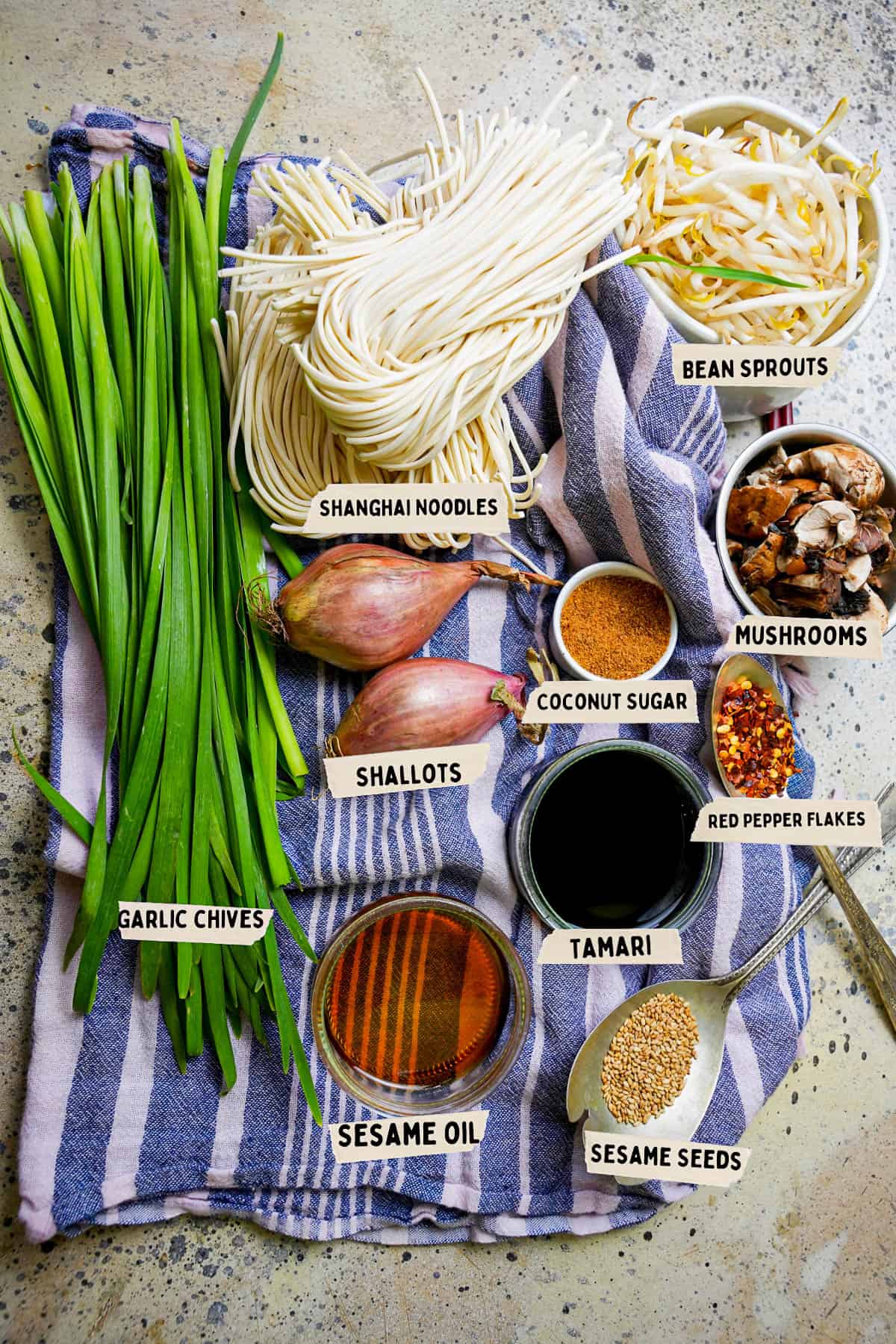
Garlic Chives (Hẹ)
Garlic chives are a flavorful herb used in Vietnamese cuisine. They have a mild garlic taste and a subtle onion-like flavor. If you can't find garlic chives, you can substitute them with regular chives or green onions for a similar touch of freshness.
Bean Sprouts (Giá đậu)
Bean sprouts are a staple ingredient in many Vietnamese dishes. They add a refreshing crunch and a slightly sweet taste. If you can't find bean sprouts, mung bean sprouts can be used as alternatives.
Fresh Shanghai-style Noodles (Bánh phở Tươi Loại Shanghai)
These are stringy noodles commonly used in Vietnamese cuisine, providing a smooth and chewy texture. I also use them to make mie goreng. If you can't find Shanghai-style noodles, you can substitute them with ramen noodles (like you might use for making curry laska and hakka noodles) or rice noodles (as a gluten-free option).
Tamari
Tamari is a type of soy sauce that has a rich, deep and savory flavor. If you don't have tamari, you can use regular soy sauce or Nama shoyu, or coconut aminos. If you are making the dish gluten-free with rice noodles, keep in mind that many regular soy sauces, including shoyu are produced with wheat.
Coconut Sugar (Đường Cốt Dừa)
Coconut sugar is a natural sweetener derived from the sap of coconut palm trees. It has a mineral-rich caramel-like flavor and can add a hint of tropical sweetness to dishes. If you don't have coconut sugar, you can substitute it with brown sugar, sucanat, or palm sugar (which is the best for making klepon with).
*See the recipe card at the bottom of the page for exact quantities, nutritional info, and detailed cooking directions.
🤯Variations
One of the things I love about Mi Xao Xi Dau is that it can be tweaked to suit the whims of your criminally insane culinary mind. Here are a few ideas to get you dreaming up some wild-ass noodly goodness:
🥜 Spicy Peanut Mi Xao:
Use either my Vietnamese peanut sauce recipe, or grab the Indonesian peanut sauce from my ketoprak recipe on these and toss in some sliced Thai red chili pepper for an extra fiery flavor. Stir fry in some baby corn and bok choy before adding the noodles and stir fry sauce.
🌿 Thai Basil Vietnamese Stir Fry:
Infuse the dish with Thai flavors by adding fresh Thai basil leaves and a healthy splash of lime juice to the stir-fry. Top the noodles with Thai basil eggplant and cilantro.
🍵 Lemongrass Mi Xao Xi Dau:
Step up the aroma by sautéing roughly chopped makrut lime leaves and very thinly sliced lemongrass, or a spoonful of tom yum paste or red curry paste.
📖 How to make Vietnamese stir fry noodles
You wanna see how this yummy thing gets made? I will walk you through the whole process. Or you can follow along with the easy-to-print recipe card towards the bottom of this page.

Step 1
Fill a medium-sized pot with water and bring it to a boil over high heat.
Add the noodles to the boiling water and cook until they are al dente, following the package instructions. It's important not to overcook the noodles.
To prevent the noodles from sticking together, give them a gentle stir occasionally while they cook.

Step 2
Once the noodles are cooked, strain them in a colander or wire mesh strainer to remove excess water. Rinse the noodles with cold water after straining to stop the cooking process and remove any excess starch.

Step 3
In a wok or Dutch oven, heat the sesame oil over high heat until it becomes hot. Once the oil is hot (approximately 60 seconds)

Step 4
Add the torn mushroom pieces. Sauté them, stirring occasionally, for about four minutes or until the mushrooms become tender. Tearing the mushrooms instead of slicing them creates more interesting, meaty textures in the dish.
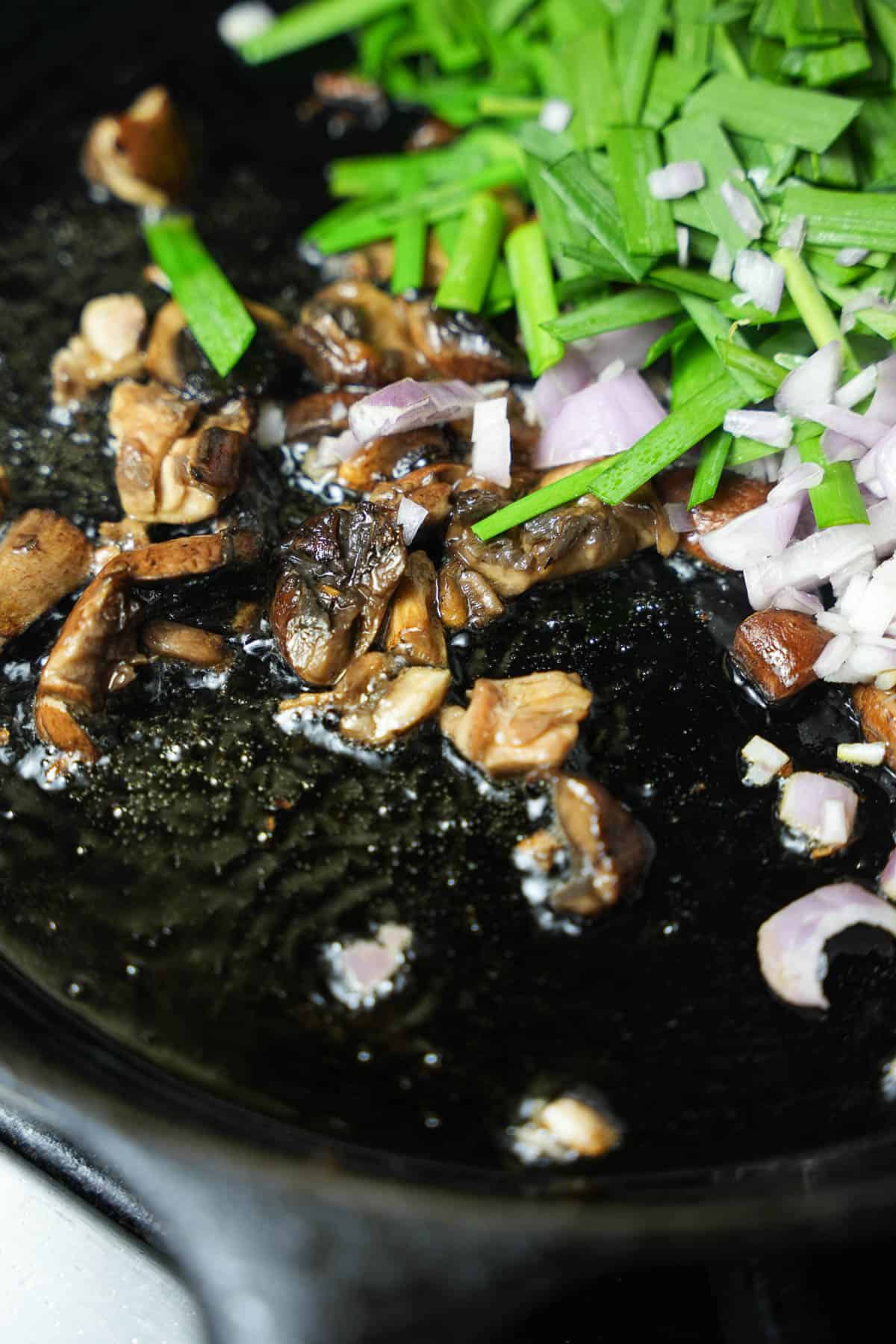
Step 5
Add the diced shallots or onion, garlic chives and sauté, stirring occasionally, for about three minutes or until the onions become fragrant and lightly golden, and the chives wilted.

Step 6
Stir in the bean sprouts, continuing to sauté for 2-3 minutes until they appear slightly wilted. This will add freshness and crunch to the stir-fry. Feel free to add other vegetables of your choice, such as bell peppers or carrots, to add more color and texture.

Step 7
Add the cooked noodles to the wok, along with tamari (or soy sauce), coconut sugar, and, if using, Shaoxing wine. Stir-fry everything together until the noodles are well coated in the sauce. Adjust the sauce seasonings according to your taste preferences. You can even add a little sriracha or samba omelet if some spice is desired.
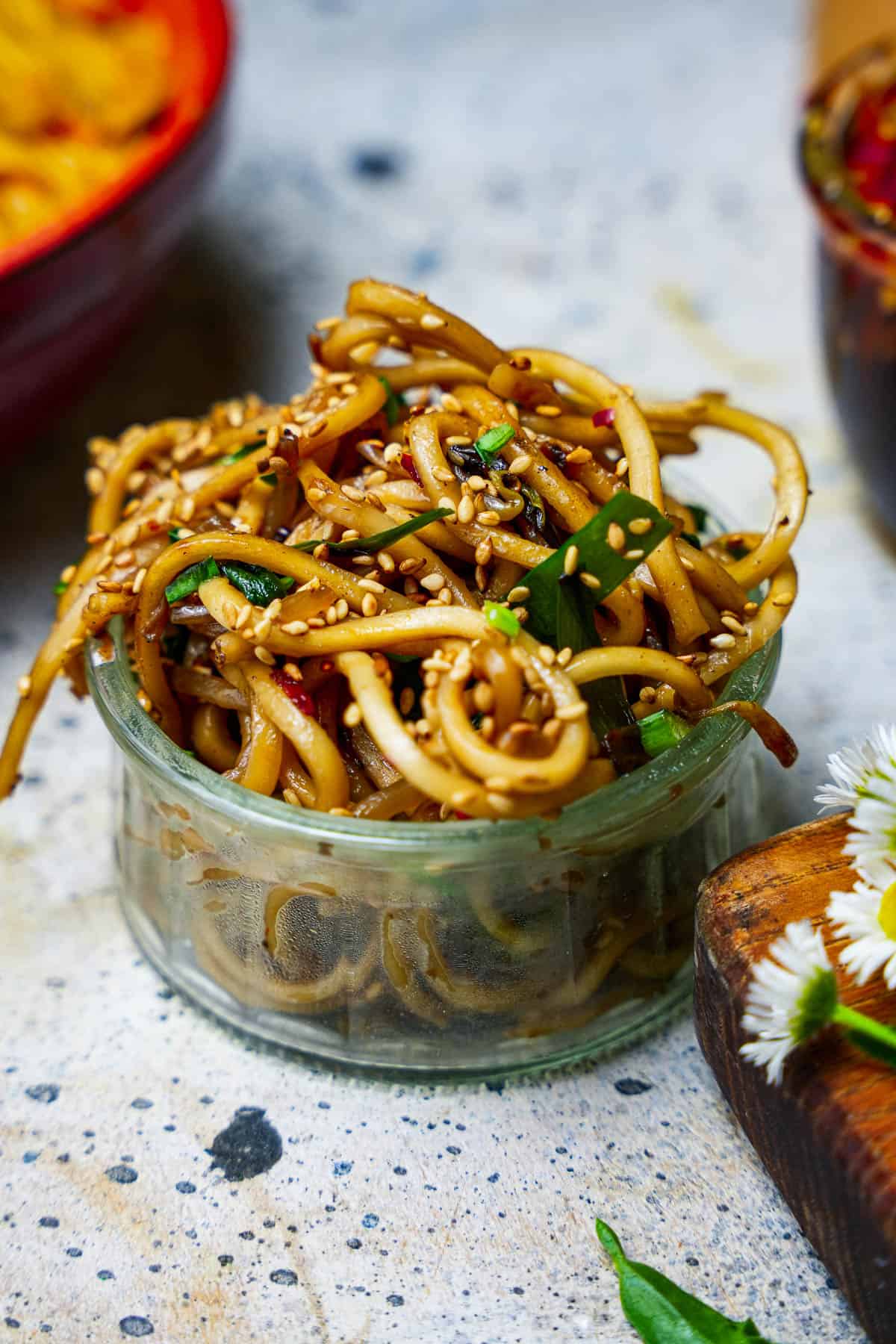
Step 8
Transfer the contents of the wok to an attractive serving dish, and garnish with minced chives and toasted sesame seeds. Now, you're ready to enjoy your delicious Mi Xao Xi Dau! Serve it hot as is, along with some banh bao chay or banh trang cuon.
🍽️Serving Ideas
Because Mi Xao Xi Dau is a friggin glorious chameleon, it doesn’t just jam with your favorite Vietnamese recipes like tofu banh mi, and ca ri chay, but also goes amazing with a variety of other Asian dishes.
One option is to serve it alongside or as a base for Sayur Lodeh, an Indonesian vegetable curry topped with lontong. The aromatic curry broth of Sayur Lodeh complements the savory noodles perfectly. Alternatively, top the noodles with crispy tofu sisig, which consists of diced tofu sautéed with onions, bell peppers, and a tangy soy-lime dressing. Another Filipino dish that adds more veggies and freshness to your noodle feast is Ensaladang Talong, a traditional Filipino grilled eggplant dish that can be served hot or cold. The smoky and charred eggplant pairs beautifully with the noodles, offering a light and fresh element.
Another option is to use the Mi Xao Xi Dau as a flavorful bed for sambal goreng tempeh, or Tofu Katsu with Yamagobo (pickled burdock root) or pickled green chilies. Serve these unbelievably crispy breaded tofu cutlets on top of the noodles, accompanied by a Japanese side salad dripping with sesame goma dressing.
💣 BOMB Vietnamese desserts to wash down Vietnamese stir fry noodles with?
I highly recommend making Che Khoai Mon, a pandan scented taro pudding. Another option is to enjoy Che Ba Mau, a colorful refreshing Vietnamese dessert made with layered beans, jelly, and coconut milk, or have some Vietnamese coconut ice cream bars. Alternatively, you can hook up some kuih dadar, or Martabak Manis, which are thick, fluffy Indonesian sweet pancakes filled with chocolate, and roasted peanuts.

🤷♀️FAQ
Mi Xao Xi Dau is a stir-fried noodle dish with a glossy soy-based sauce. It typically features egg noodles or fresh Shanghai style noodles that are stir-fried until tender. They are often served with a variety of vegetables and protein, such as shrimp, chicken, fried egg, or beef (when it is’t being made vegetarian). Mi Xao Xi Dau is typically served hot, with a sprinkle of toasted sesame seeds and fresh herbs or chives.
On the other hand, MÌ XÀO GIÒN, also known as Crispy Fried Noodles, offers a different texture and presentation. In this dish, the noodles are deep-fried until they become crispy and golden brown. The fried noodles are then topped with a stir-fried medley of vegetables, protein, and sauce, similar to Mi Xao Xi Dau. However, the key difference lies in the texture of the noodles. Mi Xao Gion is known for its delightful crunchiness, offering a contrast of textures between the crispy noodles and the tender stir-fried ingredients.
The sauce used in Mi Xao Gion can vary, but it often includes a combination of soy sauce, oyster sauce, and other seasonings to infuse the dish with a rich and savory flavor. The toppings can include a variety of ingredients, such as shrimp, chicken, pork, or a medley of vegetables.
✌️See ya later ‘frigerator
Allow the Mi Xao Xi Dau to cool down to room temperature before storing.
Transfer the leftovers to an airtight container or airtight food storage bag.
Place the container in the refrigerator and store for up to 4 days.
🔥Stovetop reheating
Transfer the desired portion Mi Xao Xi Dau to a non-stick pan or skillet.
Heat the pan over medium heat and add a splash of water, vegetable broth, or sesame oil to moisten the noodles.
Stir and toss the noodles occasionally to ensure even heating.
Continue heating until the noodles and vegetables are thoroughly heated and the desired temperature is reached.
☢️Microwave reheating
Transfer the desired portion of Mi Xao Xi Dau to a microwave-safe container or dish.
Place the dish in the microwave and heat on medium power for 1-2 minutes.
Carefully remove the dish from the microwave and stir the noodles and vegetables to ensure even heating.
Return the dish to the microwave and continue heating in one minute intervals until the desired temperature is reached.
✌️My faves serve with mi xao:

Mi Xao Xi Dau (vegan Vietnamese stir fry noodles)
Equipment
Ingredients
- 16 oz fresh noodles Shanghai-style noodles, or mother-in-law noodles
- ¼ cup sesame oil
- 2 large shallots or 1 medium size yellow onion, diced
- 1 cup torn mushroom pieces (oyster mushrooms, cremini, or shiitake mushrooms)
- 2 cups beansprouts
- 1 ⅓ cup chopped garlic chives
- ¼ cup tamari
- 2 tablespoons brown sugar or coconut sugar
- 3 tablespoons Shaoxing cooking wine (optional)
To garnish:
- ¼ cup minced fresh chives
- 1 tablespoon toasted same seeds
Instructions
- Boil a medium-size pot of water .
- Add the noodles and cook al dente.
- Strain the noodles in a colander or wire mesh strainer.
- Heat the sesame oil in a wok or dutch oven.
- After 60 seconds when the oil is hot, add the diced onion and sauté, stirring occasionally for 3 minutes until fragrant and lightly golden.
- Push the onions to one side of the pan, and add the torn mushroom pieces. Sautee, stirring occasionally for about four minutes until the mushrooms are tender.
- Stir in the beansprouts, and garlic chives, and continue to sauté for 2-3 minutes until both are wilted in appearance.
- Add the cooked noodles, tamari, coconut sugar and if you are using it, the Shaoxing wine. Stirfry until the noodles are well coated in the sauce.
- Place the contents of the wok into an attractive serving dish and garnish with minced chives, and toasted sesame seeds.
Notes

Enter your email & I'll send it to your inbox. Plus, get great new recipes from me every week!
By submitting this form, you consent to receive emails from Cinnamon Snail.

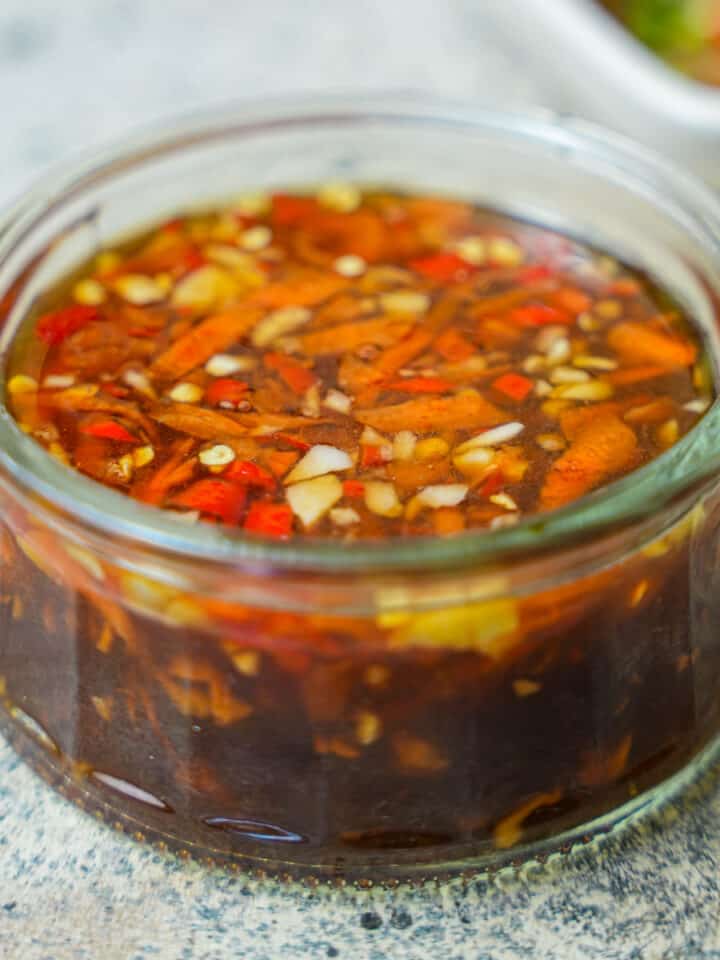
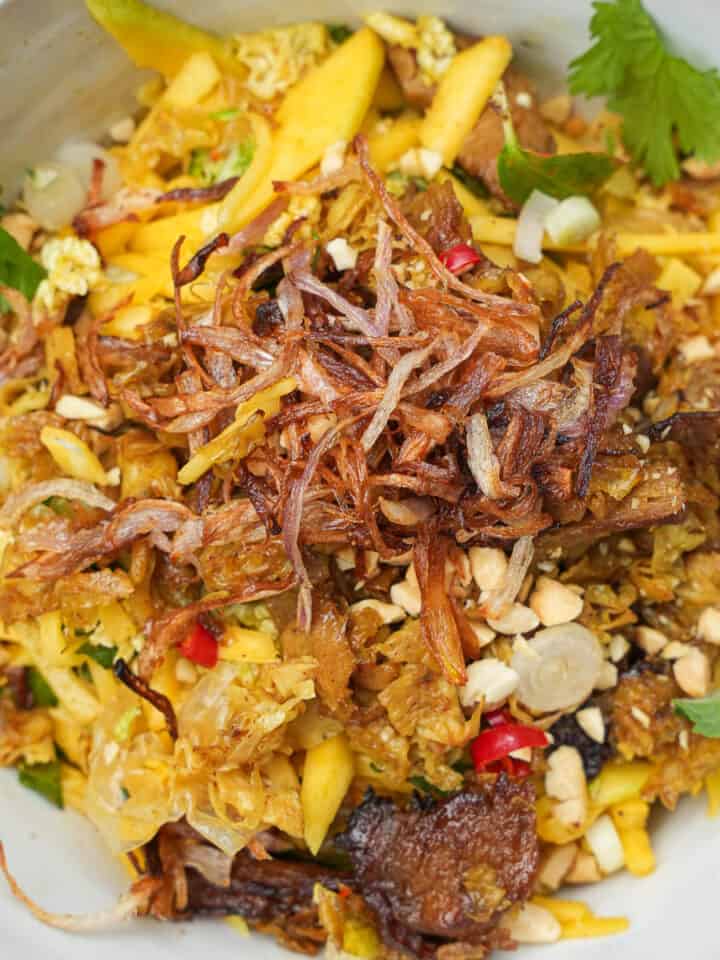






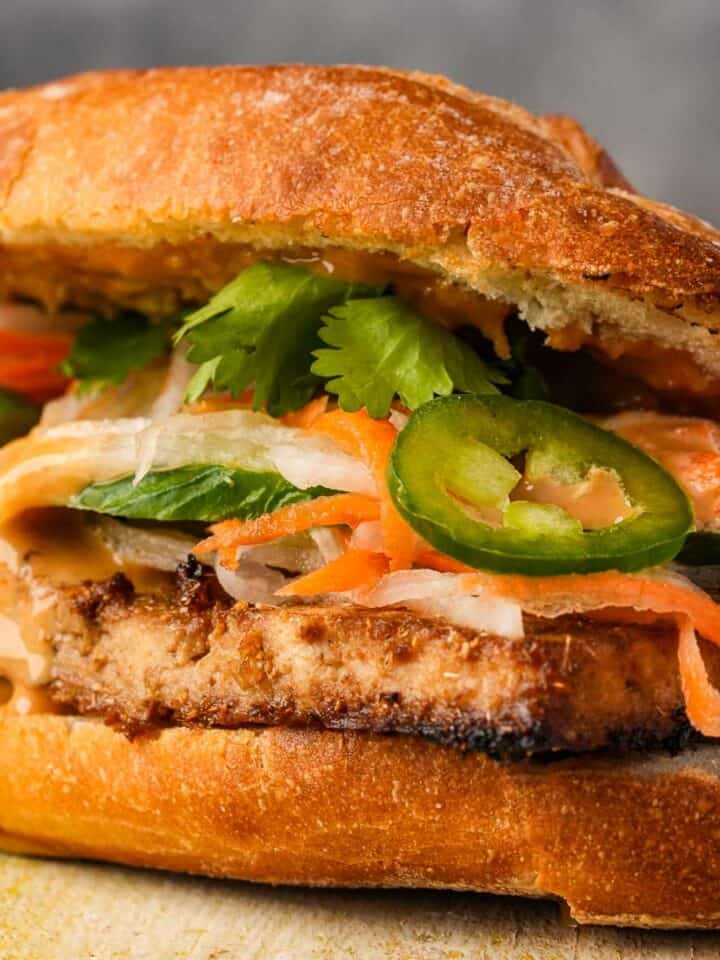
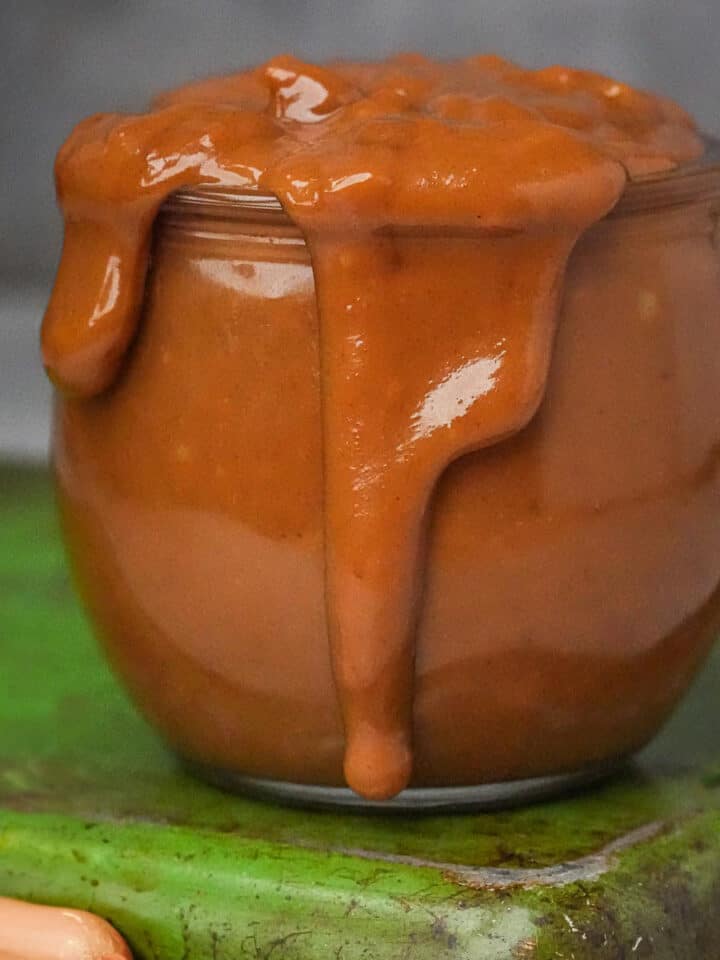
Leave a Reply